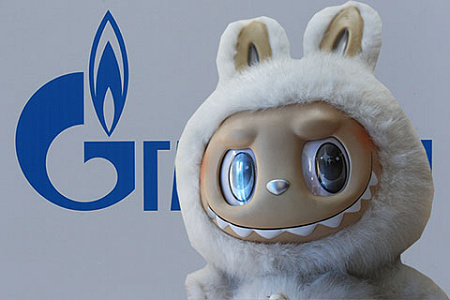
Just a decade ago, energy giants like Gazprom dominated global wealth rankings. Today, in a startling illustration of a changing world, the market capitalization of Russia’s state-owned energy behemoth has been surpassed by that of a Chinese toymaker, Pop Mart, creator of the wildly popular Labubu dolls. This remarkable turn of events is more than a market quirk; it serves as a potent symbol of the profound economic challenges confronting a company once considered a cornerstone of the Russian state and a key instrument of its foreign policy.
While it is easy to point to Gazprom’s own strategic blunders—its historic over-reliance on a European market now largely lost due to sanctions, and tragic delays in pivoting to liquefied natural gas (LNG) projects—these factors alone do not capture the full scope of the crisis. The company’s decline is deeply intertwined with Russia’s domestic economic policies, revealing systemic vulnerabilities that threaten the entire nation’s economy.
Following the loss of its European revenue stream, Gazprom’s logical path forward was a strategic pivot to Asia, primarily China, coupled with an ambitious expansion of the domestic gas grid. However, such monumental infrastructure projects require colossal investment, which has become virtually impossible to secure due to the punishingly high key interest rate set by Russia’s Central Bank in its fight against inflation.
Trapped by this restrictive monetary policy, Gazprom is buckling under a staggering debt load exceeding 7 trillion rubles. With a significant portion of this debt tied to the central bank’s floating rate, debt-servicing costs have ballooned, consuming vast resources. As a result, the company’s profits are no longer driven by its core business of selling gas but are largely paper gains from currency fluctuations and income from stakes in other energy firms.
This financial distress has had dire consequences for the state. Gazprom has been forced to suspend its dividend payments, which were once a significant source of revenue for the Russian national budget. In a dramatic reversal of roles, the energy giant has transformed from a major contributor to the treasury into an entity effectively subsidized by the state. To keep it afloat, the government is resorting to steep tariff hikes on gas for both industrial and residential consumers, a move that directly fuels runaway inflation.
Gazprom’s predicament is a microcosm of a larger economic malaise. The high cost of credit is stifling Russian businesses across the board, making it impossible to borrow for expansion, modernization, or new ventures. Key sectors like construction and metallurgy have been hit particularly hard. Meanwhile, small and medium-sized enterprises are folding at an alarming rate, with corporate bankruptcies surging by 40% in the first half of 2024 compared to the previous year as they are squeezed out of the credit market.
This has created a dangerous feedback loop. The Central Bank’s policy, designed to tame inflation, is inadvertently feeding it. To service their expensive loans, surviving businesses are forced to raise consumer prices, which in turn pushes inflation higher. This locks the economy in a vicious cycle of stagnation, where businesses focus on mere survival rather than growth and innovation, progressively weakening the country’s long-term economic foundations.
So long as this policy continues, any hope for a robust economic recovery remains illusory. The shocking image of a quirky toy doll’s value eclipsing that of a national energy champion is a stark symbol of this decline. The desperate attempts to bail out Gazprom by hiking domestic energy prices are only tightening the inflationary spiral, trapping the Russian economy in a downward trend where closed factories and frozen projects are becoming the new reality.
